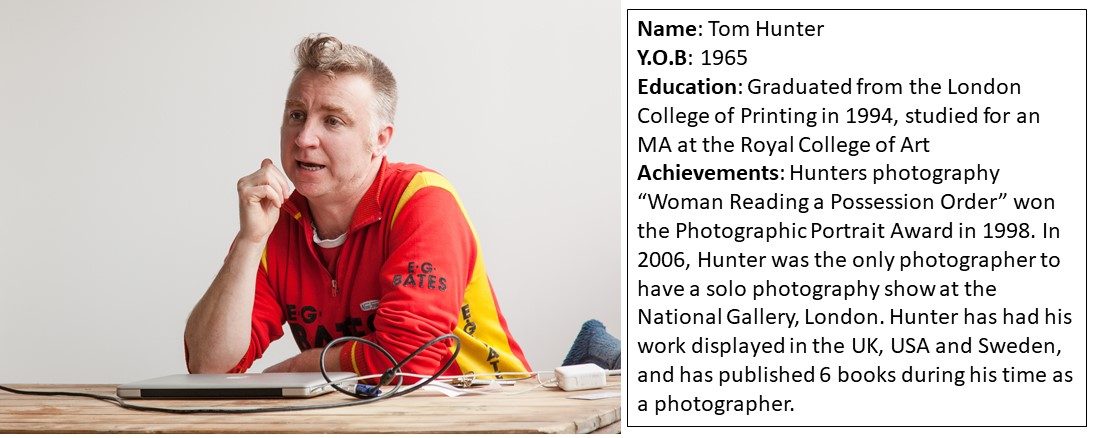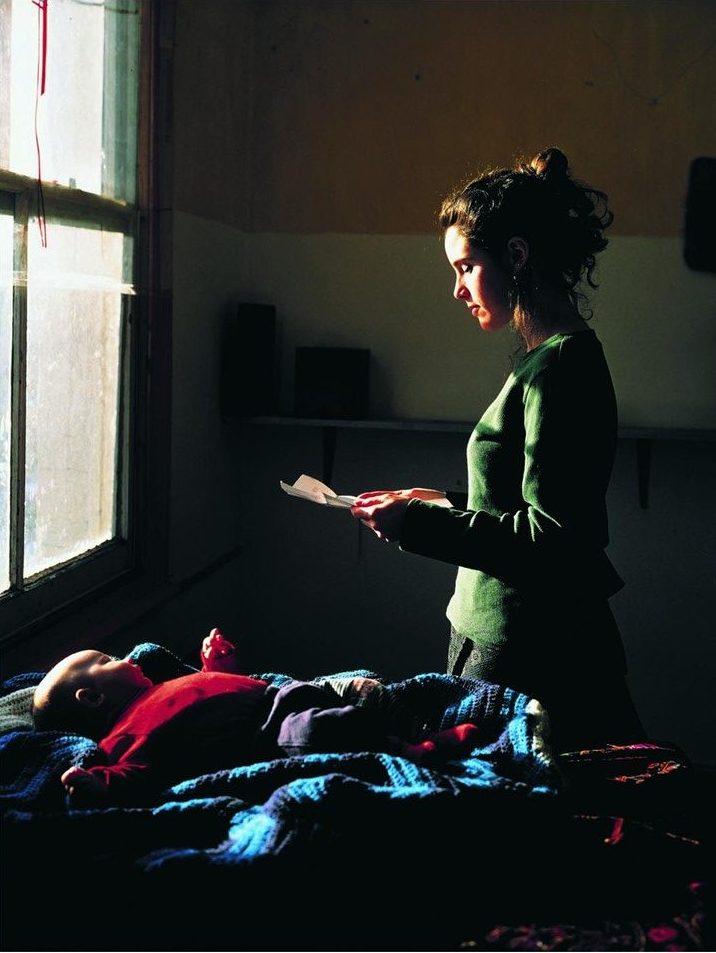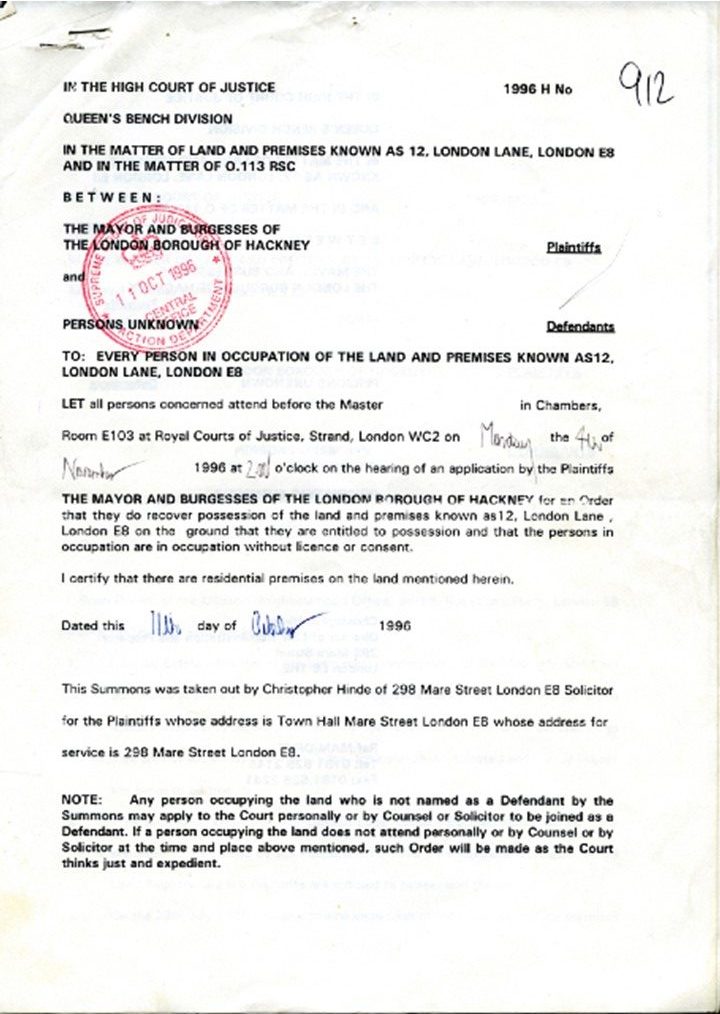Hunter is a British photographer who’s tableaux photography work has gained attention from the public and other photographers, due to it’s metaphorical symbolism and the meanings behind them.

Hunters tableaux work reflects his opinion on how certain groups within society are cast out, and treated as lesser beings due to their personal life choices, or events that they have little control over altogether. Hunter’s work has heavily influenced the people that he depicts in his photographs, for example his photograph Woman Reading a Possession Order (1997), was taken in response to Tom’s squatting neighbors receiving eviction notices. The photograph sparked a debate in the local council, and the houses were not destroyed.
Hunters work often focuses on the lives of those struggling with housing issues, such as squatters, caravan-dwellers and council housing tenants. Hunter sympathizes with this community of people due to his own life experiences, and portrays their struggles and hardships through his work.
The following images are examples of Hunter’s work:
The below image is one of Hunters most popular; it takes inspiration from the artist Jan Vermeer, and incorporates a modern story into it:


Many of Hunters images make use of ordinary people as subjects, where the viewer is placed in a position where they are looking into the private lives of the subject. This gives the viewer a sense of familiarity, where they are able to relate to the subject, yet projects such as “Person’s Unknown” are titled to contradict this sense of familiarity by giving no identity to the subjects. This contradiction allows for Hunter to emphasize his opinions on matters such as evictions and the casting out of certain groups from society, as it shows that the people dealing with these issues are just regular people, and live normal and relatable lives.

Hunter has been able to incorporate his own life experiences into his work, allowing for a more personal touch to be added to his images, and uses his work as a way to advocate for social groups who are often cast out of society.
In an interview with The Guardian newspaper discussing his photograph, “Woman Reading A Possession Order”, Hunter was quotes as saying, “I phoned her up last week and she’s still happy with the picture. It’s a record of her, her child and her home at the time. The great thing is, the picture got a dialogue going with the council – and we managed to save the houses.”












